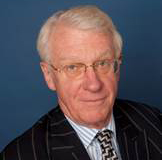Gold Investment Review
Annual Review 1999
1999 was a successful year for the Tocqueville Gold Fund, which produced a return of 20.6% compared to a negative 7.8% for the benchmark Philadelphia Stock Exchange Gold/Silver Index, an outperformance of 28.4%.
When we started the fund June 30, 1998, we were the first new gold fund startup in four years, partly on the rationale that gold and precious metals were so out of favor that it was difficult to imagine further downside. This reasoning was in keeping with Tocqueville's contrarian investment style. Since then, the precious metal fund sector has continued to consolidate due to prevailing pessimism over gold's prospects among the majority of professional investment managers. In my view, our fund stands a good chance of emerging as one of few preeminent choices available when investment money flows return to this sector, as I anticipate will happen over the next few years.
While pessimism still reigns, the fundamentals of the gold market have turned bullish, a fact that has escaped most observers. The Washington Agreement on Gold, signed September 26th, 1999, was the critical watershed. The agreement, signed by the 15 European Central Union members, fixed the level of outright sales for the next five years at a level well within the market's capability to absorb. More important, the banks will not increase gold loans beyond the current level. Gold loans have been more damaging to the gold price than outright sales themselves. Finally, the US, Japan, the IMF, and the BIS have stated that they will abide by the spirit of the agreement. Therefore, 85% of world official sector gold holdings are now off the market.
Central bank sales and lending have been by far the biggest factor responsible for the bear market in gold. Without this pressure, gold prices are poised to rise sharply over the next few years. If so, returns from investing in this sector should prove most rewarding.
Because gold company managements bought into the bearish case for gold (i.e., never ending sales by central banks) they engaged in forward sales and other hedging transactions facilitated by bullion dealers. The sharp spike in gold following the Washington Agreement blew up the hedge books of two high profile producers, Ashanti and Cambior and threatened the solvency of the two companies. Following these developments, gold mining executives have been far more reluctant to engage in the kind of hedging activities which depress the gold price.
Central bank lending to bullion dealers was the mechanism to facilitate mine company hedging. In their eagerness to promote this business, bullion dealers provided lax financial terms to the mining companies. As a result, they have assumed the bulk of the financial risk in the underlying short position. This short interest, translated into a dollar amount at current prices, approximates $60 to $80 billion. These institutions, which include Goldman Sachs, JP Morgan, Chase Manhattan, and Credit Suisse, face severe financial peril if the gold price rises sharply. A rising gold price will force them to buy back the gold they are short. Because the gold market is thin, these and other bullion banking institutions are trapped. In the near term, they may be able to continue to manipulate the market to disguise their predicament. In the process, they continue to disseminate self-serving and misleading information. As time passes, however, increasing numbers of market participants will realize the facts and these short positions will come under speculative attack. I expect to see this happen next year. A short covering panic could drive the gold price hundreds of dollars higher. It is likely to be resolved only by some form of government rescue, after which the gold price should maintain an equilibrium price far higher than the current depressed level.
As gold returns to favor as an investment class, current depressed valuations of the gold mining shares should improve along with earnings. In sum, I expect the next two to three years to be eventful and fruitful for precious metals investors.
With all best wishes for the millennium.






 John Hathaway, CFA, Senior Managing Director, Co-Portfolio Manager
John Hathaway, CFA, Senior Managing Director, Co-Portfolio Manager









